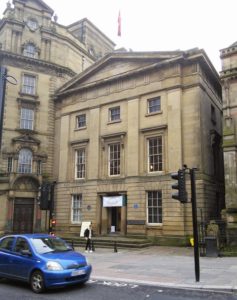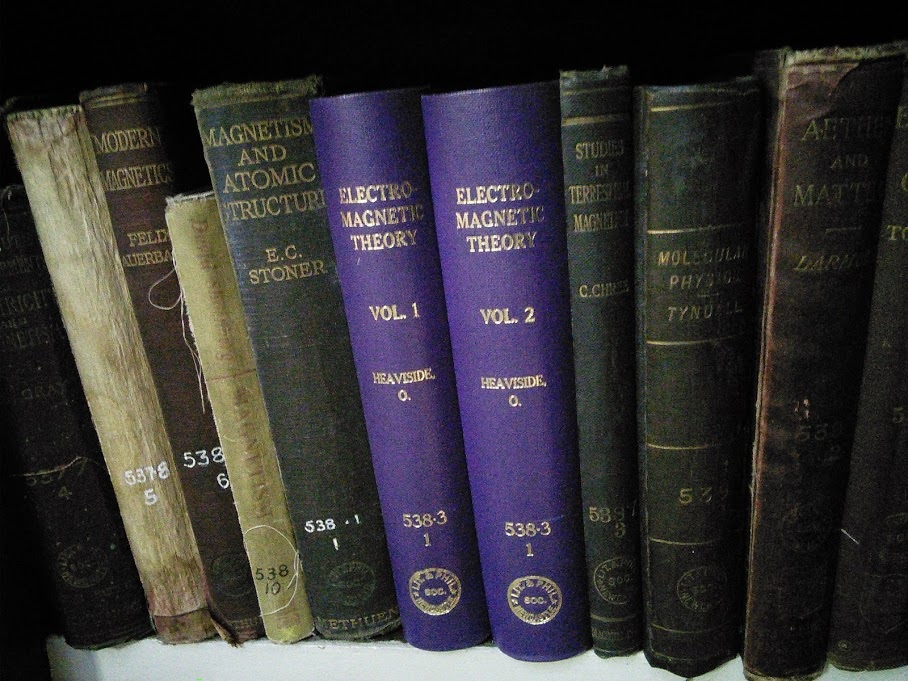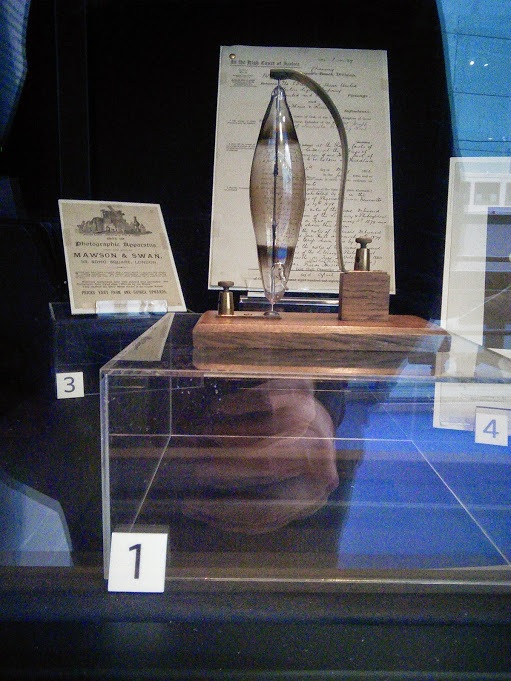
Newcastle-Upon-Tyne holds a key place in electromagnetic history. Founded in 1793, the “Lit & Phil,” or Literary and Philosophical Society of Newcastle, is the largest independent library in the UK outside London, housing over 160,000 books. It was at the Lit & Phil that a humble telegrapher, Oliver Heaviside, first studied Maxwell’s theory of electricity and magnetism. Heaviside went on to “make patent what was latent” in Maxwell’s sometimes obscure theory, reducing it to the four “Maxwell’s Equations” employed by physicists and engineers to this day.
Heaviside’s own works – freshly rebound – grace the shelves there, embedded among some of the very texts the young student of electricity and magnetism would have encountered well over a century ago.

Newcastle’s electromagnetic claim to fame does not end at Oliver Heaviside, however. Joseph Wilson Swan demonstrated his light bulb in 1878. A few months later, on February 3, 1879, he demonstrated his bulb in a lecture at the Lit & Phil. Swan’s lightbulb is on display at the Discovery Museum.


